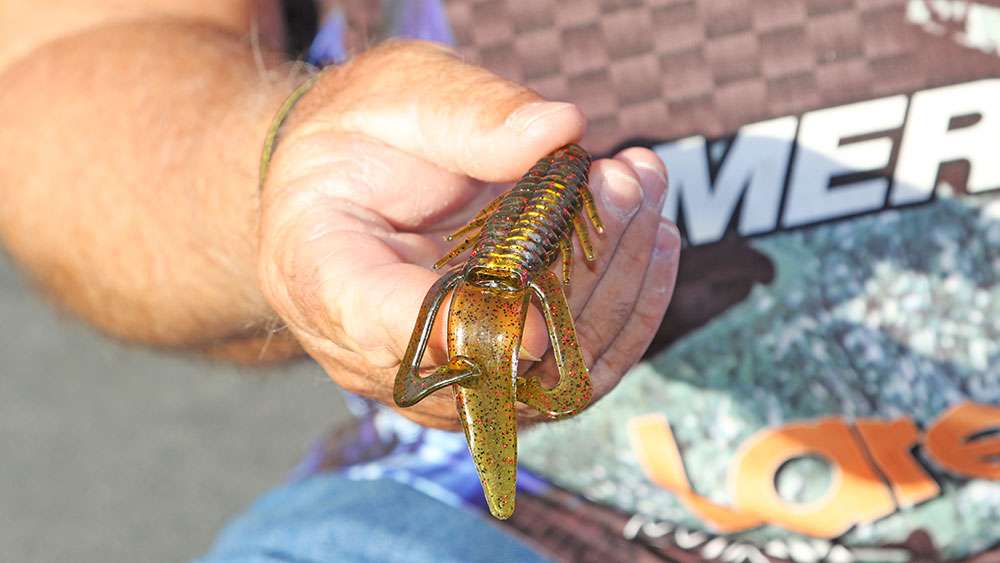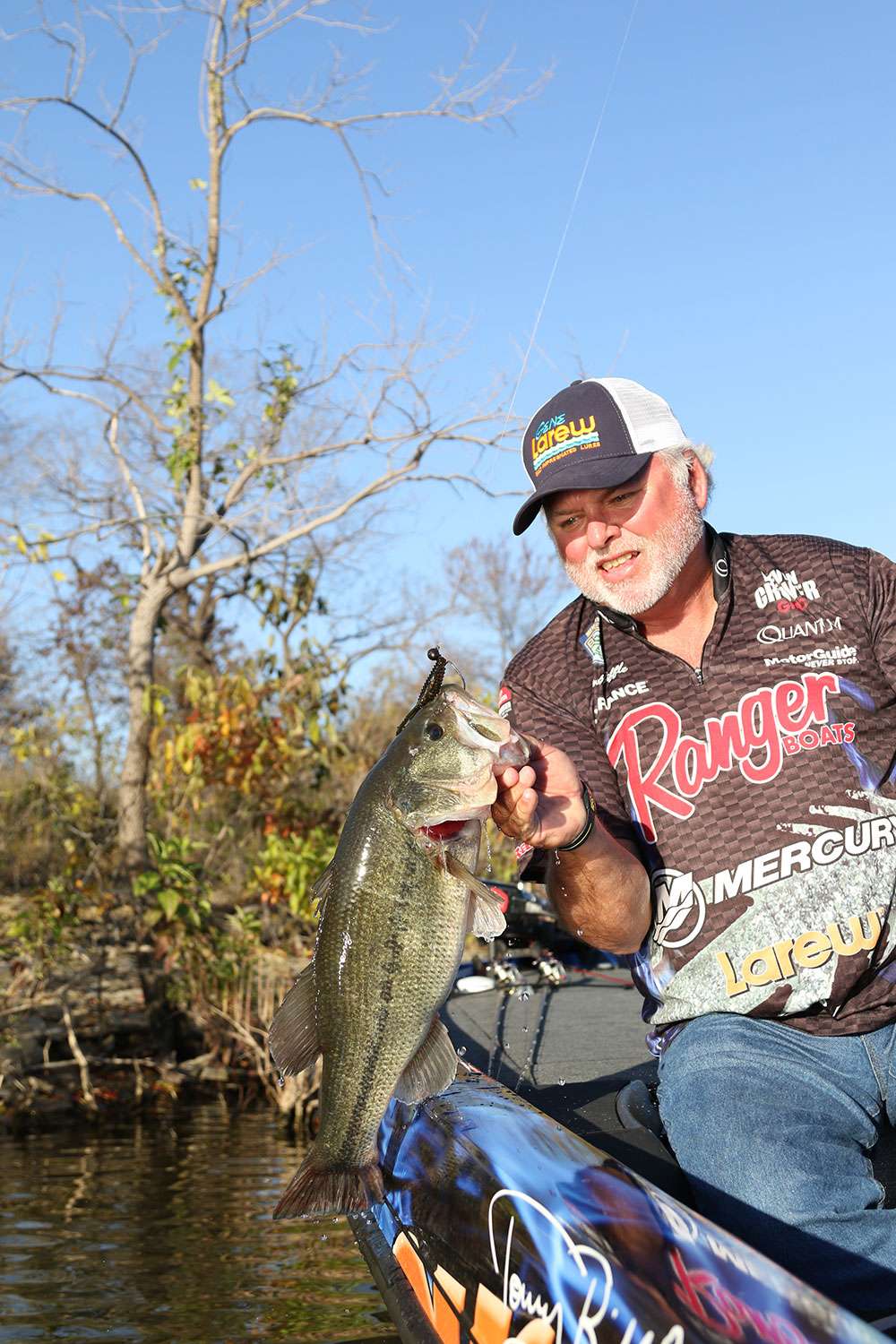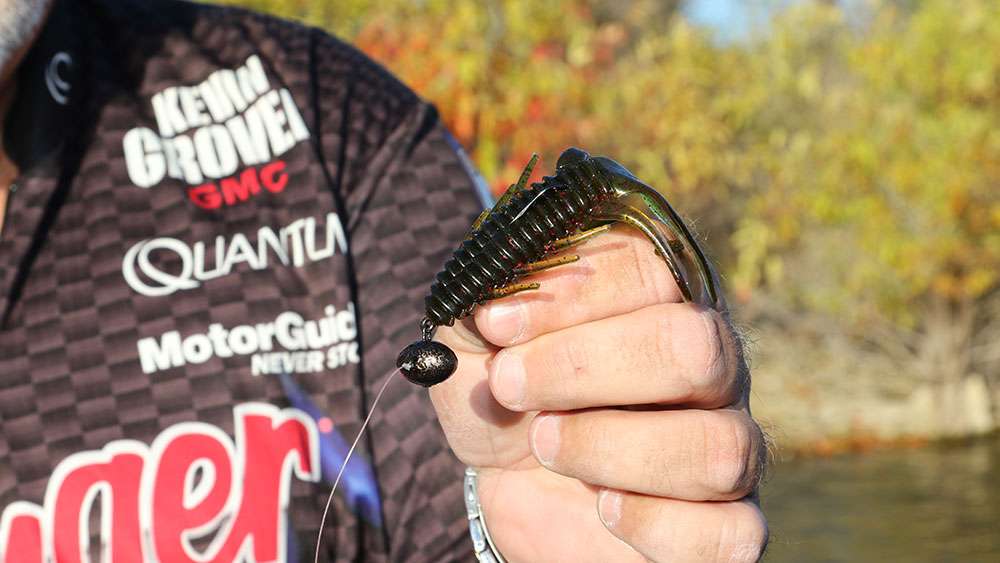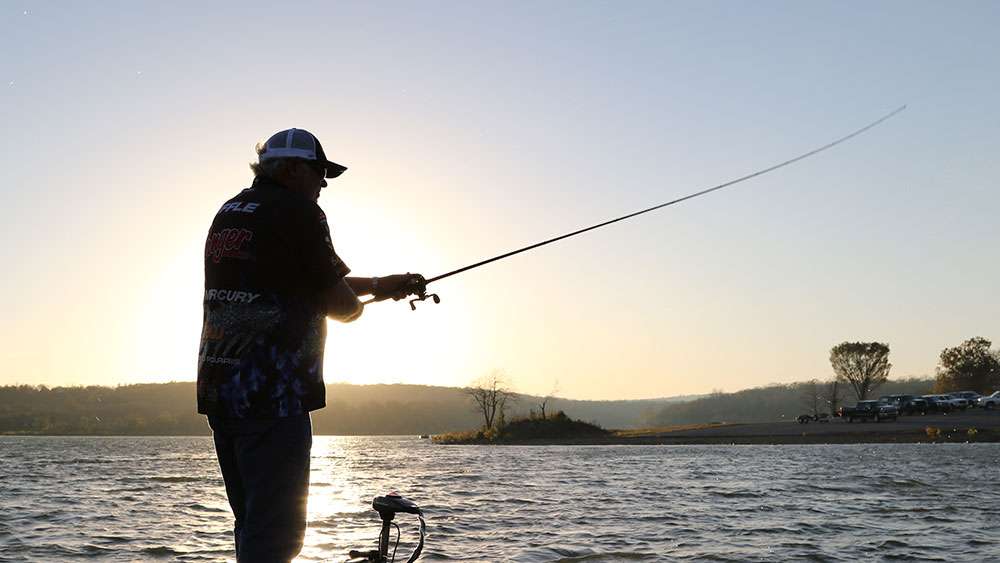
Spend any time around Bassmaster Elite Series pro Tommy Biffle and you’ll get a big dose of no-nonsense. Therefore, if the legendary Oklahoma angler puts his name on something, you can bet it’s been painstakingly conceived and thoroughly tested.
To wit, there’s a reason he spends so much of his time behind the Gene Larew Biffle Bug.
A broad, slim body offers an ample profile, yet slips in and out of cover well; concentric rings along the body catch water and generate subtle vibrations and that cupped tail ensures constant action with a gliding motion on the fall.
“We spent a lot time getting that body (cavity) right,” Biffle said. “I told them I wanted it oval shaped, not round. That’s because I wanted to be able to put a rattle in there without it slipping out.”
Biffle’s design leverages the bait’s natural compression to hold a rattle more snug than a round cavity. Also well conceived is the bait’s nose, with the first 3/4 inch made solid for optimal hook support.
So, that’s the tool; now, how ‘bout the tactics?
Biffle’s namesake creature bait works well in pitching, flipping and swimming, but his signature technique is a simple cast-and-wind deal that makes the bait do what it’s made to do. (Notably, Biffle’s “Bug” tactics and tips also apply to a wide range of similar baits.)

Rigged to rumble
The nuts-and-bolts approach Biffle employs depends on maximum bait motion — just what he gets from the Gene Larew Hard Head; an articulated football head that excels at rumbling over rocky, uneven bottom.
Biffle, who also had a hand in the Hard Head’s design, said that effective presentation depends on maintaining contact with what’s below. For him, a fast, steady retrieve does the job.
“I use that retrieve because it keeps the bait out of the rocks,” Biffle said. “This head is designed to deflect off the rocks, so it’s not going to get down in those cracks like it can when you’re hopping it up and down.”

Target Acquired
There aren’t a lot of places Biffle does not like to throw the Bug, but during a trip on Fort Gibson Lake near his home in Wagoner, he pointed out some of his faves.
- A long, flat windward shoreline didn’t look like much at first glance, but with a typical Oklahoma “breeze” roiling the lake; this bank took the full force of main lake wind. The attraction? Stacked baitfish and easy meals for hungry smallmouth.
- Transitional banks with their mix of chunk rock, smaller rocks and pea gravel typically mark the course to spawning bays. Prespawners will stage along these incongruous areas, so Biffle never passes on such promising spots.
- Pea gravel banks, Biffle said, hold particular appeal even beyond the spawning season.
“Those fish can pick off crawfish easier than they can around boulders where the crawfish can run into the cracks and crevices,” he said.
- Small points made of gravel, riprap, etc., often hold one good fish, which stakes out a sweet ambush spot. These setups are usually good for one big bite, so give every one you find a handful of casts.
As we approached a local boat ramp, Biffle pointed out that; large or small, paved or gravel; these points of launch and return are some of the most overlooked fish magnets in any given lake. Here’s why.
- From a simple habitat standpoint, a ramp’s hard bottom — cement or gravel — collects heat and turns the spot into a cozy lounge where bass getting their chill on are typically receptive to passing meals.
- Anglers powering onto the trailer blow out prop holes at the ramp’s drop off and bass being bass, there’s often a few laying in these furrows. As long as you’re not hindering other boaters, these spots are worth a few shots.
- A lot of tournaments release their fish right at the ramp and you can bet that a good number of them park onsite before wandering elsewhere. Regardless of when the last competition was held, give it a shot, in case a few holdovers are still in the house.
Mud lines formed from wind-stirred bottom sediment actually create cover for bass. As Biffle explains, these murky canopies offer shade and ambush potential, just like lily pads, docks and grass mats. That’s why you may spot him fishing a seemingly nondescript spot — it just needs a lid.

The smell of success
Biffle invests about as long to prep his bait for duty as some gals spend in front of the bathroom mirror. That’s not superfluous; it’s tried-and-true perfectionism that’s kept him at the top of his game
Essential to his bait prep is Larew Biffle Bug Juice, a crawfish/garlic scented attractant for which this Elite pro employs a quick and efficient application system.
Biffle starts with an ample dose squeezed into the bait’s body cavity. He’ll then lay a line of Juice along the bait’s ribbed exterior and use the bottle’s applicator nozzle to spread it along those ribs for maximum exposure.
One last tip: Rather than find a towel or tissue to clean the bottle’s nozzle before returning the cap, Biffle makes full use of the materials at hand. Rather than simply mopping up the mess, he’ll rub any excess Biffle Bug Juice on the bait’s broad tail and kicking legs.
You can never have too much of a good thing — especially when your name’s on it.






